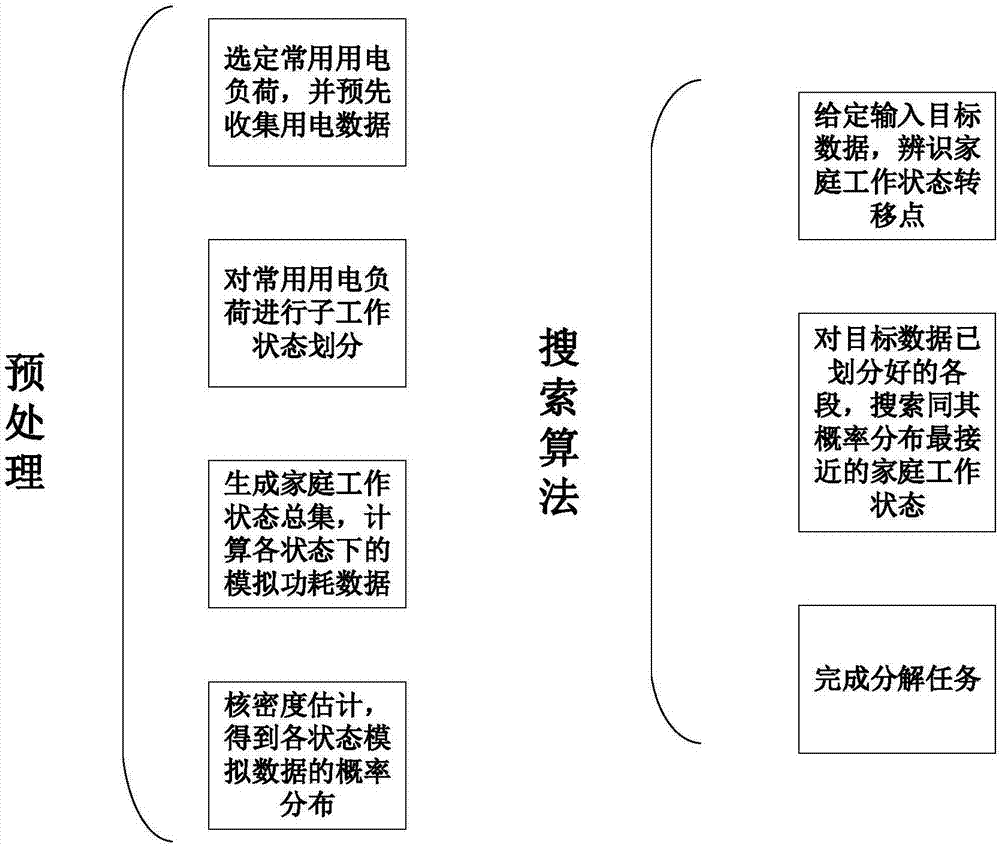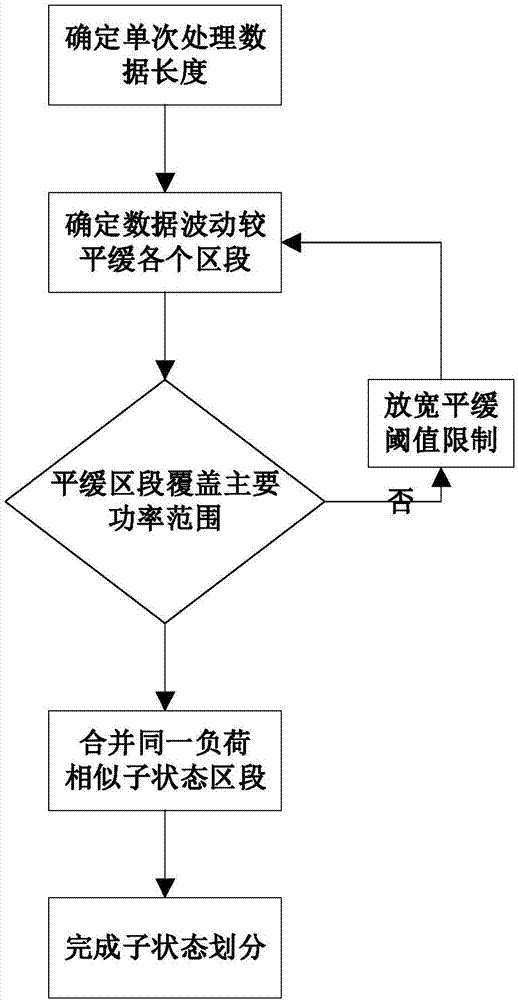Kernel density estimation-based non-invasive power load identification method
A technology of kernel density estimation and power load, applied in calculation, electrical digital data processing, special data processing applications, etc., can solve the problems of difficult promotion, high cost, and low decomposition accuracy, and achieve simple and convenient implementation, low cost, and good The effect of breaking down the effect
- Summary
- Abstract
- Description
- Claims
- Application Information
AI Technical Summary
Problems solved by technology
Method used
Image
Examples
Embodiment Construction
[0059] The present invention will be further described below in conjunction with the accompanying drawings of the specification.
[0060] Such as figure 2 As shown, a non-invasive power load identification method based on kernel density estimation of the present invention includes the following steps:
[0061] 1) Select the common household electricity load as the research object, collect its power consumption data, and divide the sub-states to extract the power distribution;
[0062] 2) According to the power distribution, generate a total set of home working states, and calculate the simulated power consumption data in each state;
[0063] 3) Use kernel density estimation to obtain the probability distribution reference model of each state simulation data;
[0064] 4) In the above reference model, for a given input target data, identify the transfer point of the family work status, and divide each family work status data segment;
[0065] 5) For each work state data segment, search fo...
PUM
 Login to View More
Login to View More Abstract
Description
Claims
Application Information
 Login to View More
Login to View More - R&D
- Intellectual Property
- Life Sciences
- Materials
- Tech Scout
- Unparalleled Data Quality
- Higher Quality Content
- 60% Fewer Hallucinations
Browse by: Latest US Patents, China's latest patents, Technical Efficacy Thesaurus, Application Domain, Technology Topic, Popular Technical Reports.
© 2025 PatSnap. All rights reserved.Legal|Privacy policy|Modern Slavery Act Transparency Statement|Sitemap|About US| Contact US: help@patsnap.com



